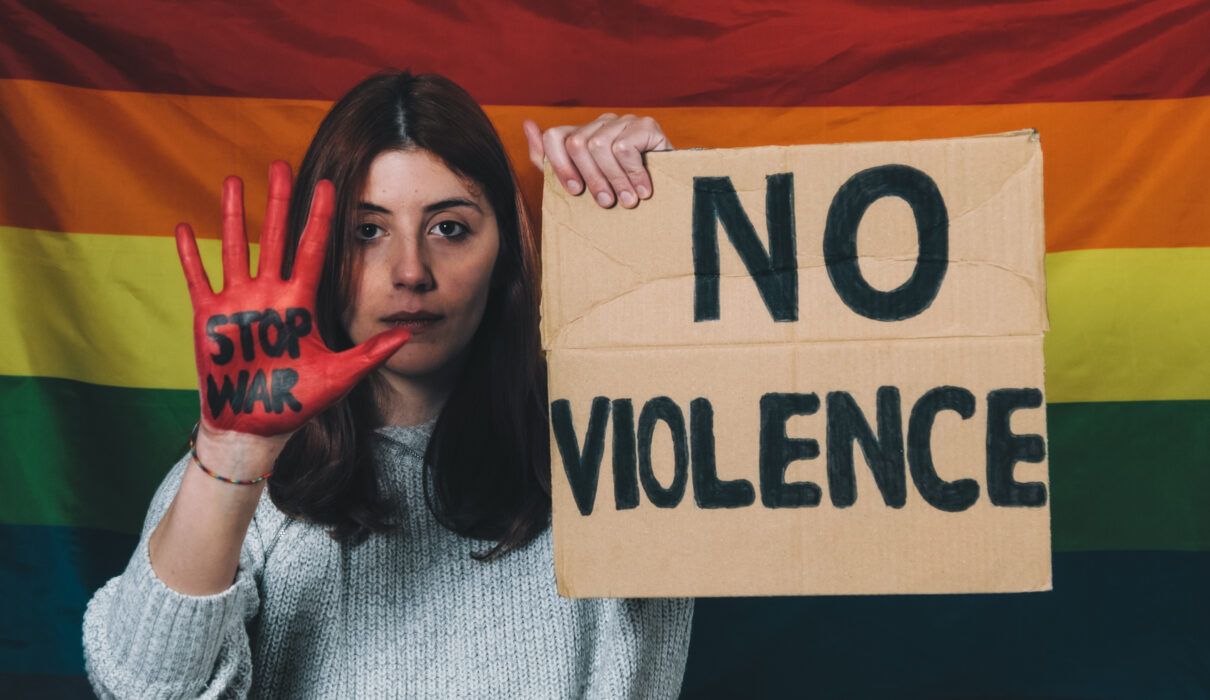Symbolic violence is harder to detect than physical violence, but it is quite obvious once you learn to identify it. In this text, find out how to recognize it.
In our society, violence does not always take the form of physical or obvious violence; there is a subtle form: symbolic violence. Although it does not cause wounds or bruises, this is just as damaging as direct violence.
It works through symbols, discourses and representations, perpetuating power relations and reinforcing the segregation of groups. Here, through the definition of the concept and several examples, you will achieve a deep understanding of this surreptitious violence linked to the system. Let’s begin.
What is symbolic violence and how does it manifest?
The term “symbolic violence” was coined by sociologist Pierre Bourdieu . It refers to the processes by which power is exercised vertically through symbols, gestures, words and cultural representations .
Its objective is not the subjugation of groups through domination and physical intimidation, but the imposition of power structures and subordination in social structures.
This type of violence manifests itself through various actions; some of the best known are the following:
- social exclusion,
- discriminatory language,
- stigmatizing speeches,
- creation of negative stereotypes,
- imposition of norms and values that reinforce structural inequalities.
A well-known example is the stereotypical representation of women in the media. They are often portrayed as sexual objects or as dependent and submissive people. These stereotypes contribute to perpetuating gender inequality.
Symbolic violence and discrimination, are they the same thing?
While symbolic violence and discrimination are related, they are not identical concepts. While discrimination involves treating certain groups unequally based on characteristics such as race, gender or sexual orientation, the violence in question is a mechanism that legitimises and perpetuates that discrimination.
That is to say, when it is symbolic, violence becomes the driving force of discrimination, in addition to grouping together a series of other measures that are detrimental to social cohesion.
An example of this is found in the study published in the Mexican Journal of Political and Social Sciences , which describes discriminatory acts by commission and omission towards women who want to enter politics.
In the same case, while discrimination would be to consider that only men can be politicians, violence through symbolism would be to falsely accuse women, omit them from meetings and plenary sessions or incite violent acts against them.
How does this violence contribute to discrimination against minority groups?
As you can imagine, this type of violence has a great effect of perpetuating and worsening discrimination against minority groups . Through the aforementioned negative representations, stereotypes and dehumanizing discourses, structural inequalities are reinforced and the marginalization of these groups continues.
A paper published in the International Journal of Developmental Science in 2018 reviewed the existing literature to conclude that exposure to radical violence influences decision-making and greater participation in political violence.
Therefore, a continuous deployment of negative symbols, discourses and representations can have harmful effects on the groups towards which this symbolic violence is directed.
Consequences of violence through symbols
Such violence not only has repercussions on individuals and groups who are discriminated against, but also affects society as a whole. By perpetuating stereotypes and inequalities, this violence undermines social cohesion and limits the full development of a fair and inclusive environment .
The study by Bar-Tal et al ., published in the Journal of Social Issues , examines the consequences of symbolic violence in divided societies. The findings indicate that this mechanism contributes to social polarization, conflict, and societal fragmentation .
It may also hamper reconciliation and peace-building efforts by fuelling mistrust and hostility between different groups.
Furthermore, this violent discourse generates stress, anxiety, depression and low self-esteem in the affected individuals, as noted in a paper published by Psychological Therapy .
To eradicate symbolic violence, we must get to its roots
It is essential to continue researching and delving deeper into the study of violence based on symbols, in order to develop strategies that challenge and transform the narratives and practices of this form of discrimination.
Raising awareness, educating and promoting diversity and equality are key tools in the fight against such violence and in building a more just and respectful society.
Developing critical thinking will lead us to question the very concept of violence, transcending its physical dimension. Sexism, homophobia, racism, ableism, speciesism and many other forms of segregation are underpinned by this. Let’s get to the root of the problem and eradicate it.


